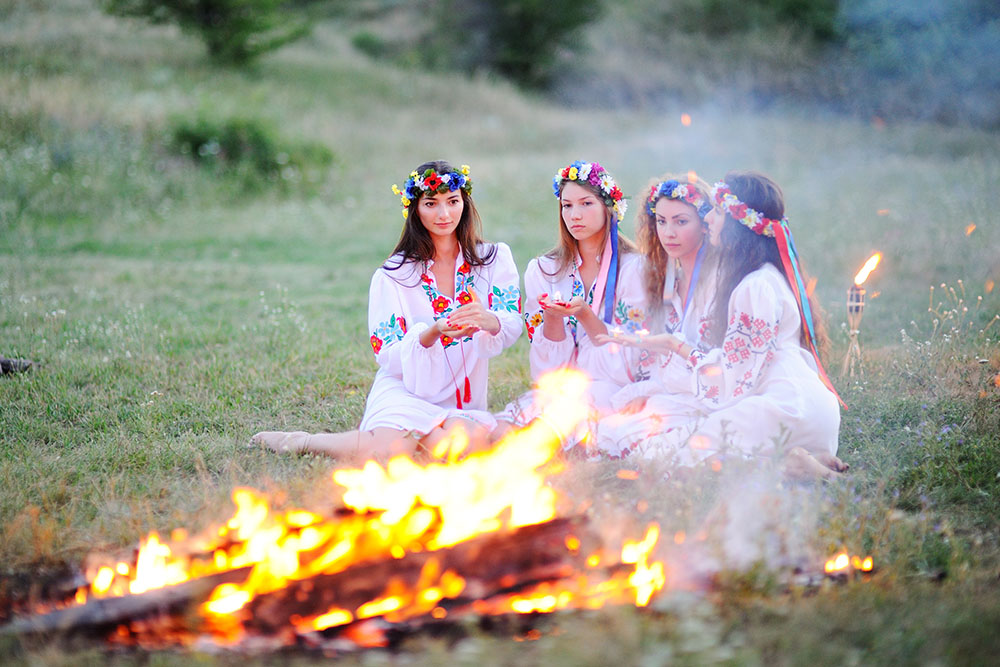ST JOHN’S EVE
Tonight is the night, beloved readers! Tonight is St John’s Eve. For those of you who are not familiar with this Celtic tradition, today’s post will equip you with all the knowledge needed to recreate your own St. John’s Eve, if you so choose. Get ready to leap over open flames and eat plenty of “Goody”. If you don’t know what “Goody” is, do not fret. You’re about to find out.
Who is this St. John?
There are a few St. Johns out there. But this feast in particular is referring to St. John the Baptist. I like to think of St. John the Baptist as Jesus’ bosom buddy. They met each other while in the wombs of their respective mothers, Elizabeth and the Virgin Mary. Story has it that St. John lept inside his mummy’s tummy when Mary informed her cousin of her immaculate conception. John went on to baptize Christ and many others, but was eventually cruelly martyred by a Roman tetrarch (a.k.a. a sub-king, like kind of a king but not really a king, you know? It’s confusing.).
In the ancient Celtic Calendar, the Feast of St. John the Baptist fell on June 24th. So the St. John’s Eve festivities began at sunset on June 23rd. This day also happened to fall very close to the Summer Solstice, referred to as “Midsummer” in the British Isles. St. John’s Eve both celebrated the dawn of summer and the life of St. John the Baptist!
Bonfire Day
St. John’s Eve is also mischievously known as “Bonfire Day” or “Bonfire Night”. Why? Because this festival was marked by the lighting and burning of many large bonfires. These fires were meant to draw God’s blessing on the summer crops and to repel witches and evil spirits. In Ireland, the bonfire was traditionally lit by the eldest person of the community, while the youngest would throw a bone into the flames. Ashes were scattered through the fields for good luck.
After the celebration, participants would collect the burnt embers of the fire, and bring them home, throwing it into their fields for good fortune in the coming year. Attendees of the festival would jump over the fires to signify the seasonal transition, but also very likely to test one another’s manhood! In fact, a great deal of jumping and leaping was involved in St. John’s Eve. Farmers would jump as high as they could for tall crops. As for the fishermen, their nets and boats would be blessed by priests and celebratory salmon dinners were held. St. John’s Eve also marked the beginning of summer swimming in Ireland. Doesn’t this all sound like so much fun?
Origin and Legacy
The first record of a St. John’s Eve celebration comes out of France from a theologian at the University of Paris in the early 12th century. Out of England, the first reference comes in the 13th century in a parish Liber Memorandum. A Christian monk, Lilleshall Abbey, wrote “ In the worship of St John, men waken at even, and maken three manner of fires: one is clean bones and no wood, and is called a bonfire; another is of clean wood and no bones, and is called a wakefire, for men sitteth and wake by it; the third is made of bones and wood, and is called St John’s Fire.” I thinketh that thiseth is very interesting…
Today, St. John’s Eve traditions include processions, going to mass, bonfires, and feasting! A special dish called “Goody” is traditionally prepared in parts of Ireland. The exact year in which this tradition began is unknown, but what we do know is that in Connaught, Ireland, “Goody” was invented. This dish was a white ‘shop-bread’ which had been soaked in hot milk and flavored with sugar and spices. It was usually made in a large pot that was either placed on the communal bonfire or heated on a smaller fire close by. St. John’s Eve is celebrated today all around the world, but I found great joy in diving into its Celtic origins. Above all, I hope this post has inspired you to light a bonfire tonight, cook up a salmon feast, and jump or leap with gratitude for the beauty that this summer season brings. Sláinte, everyone!
